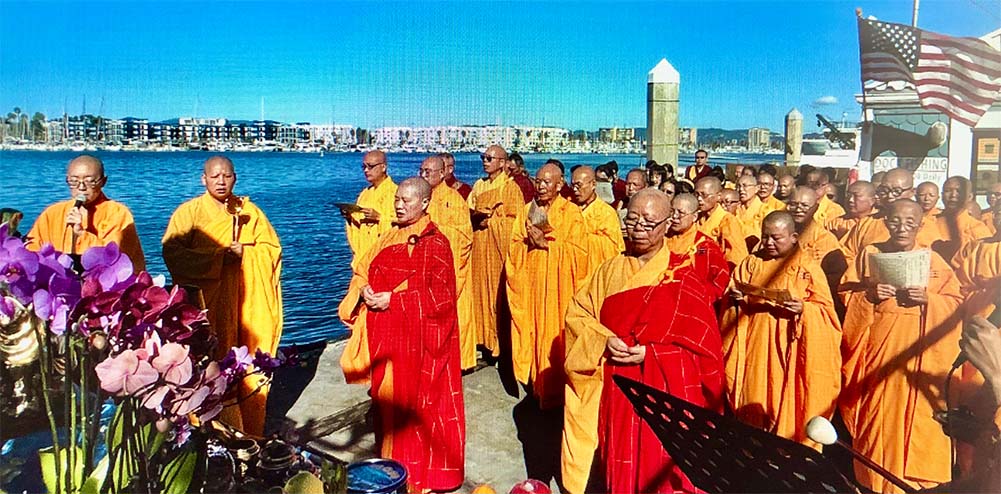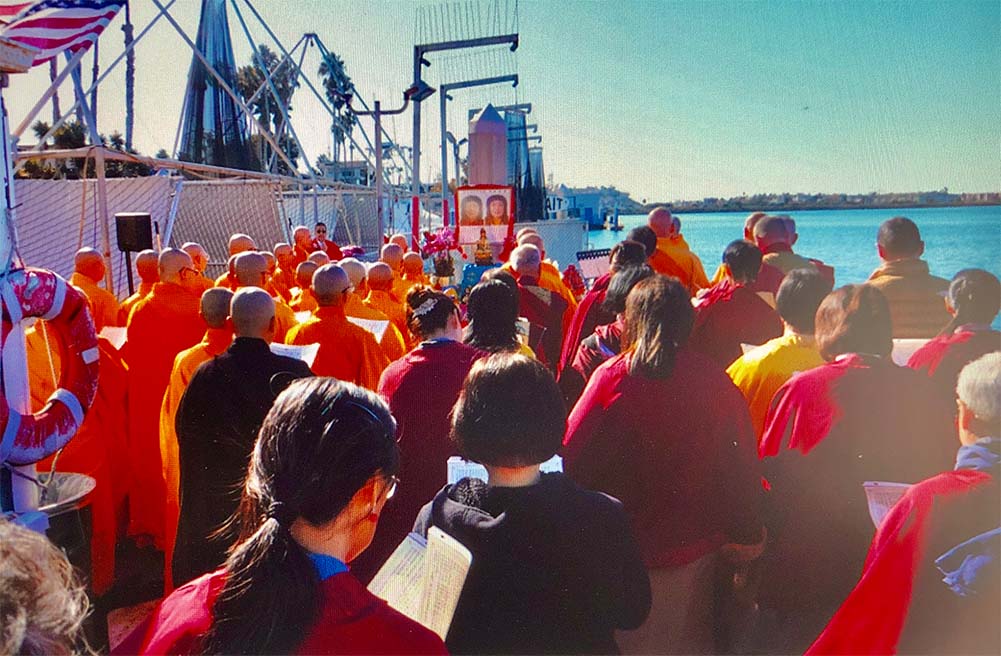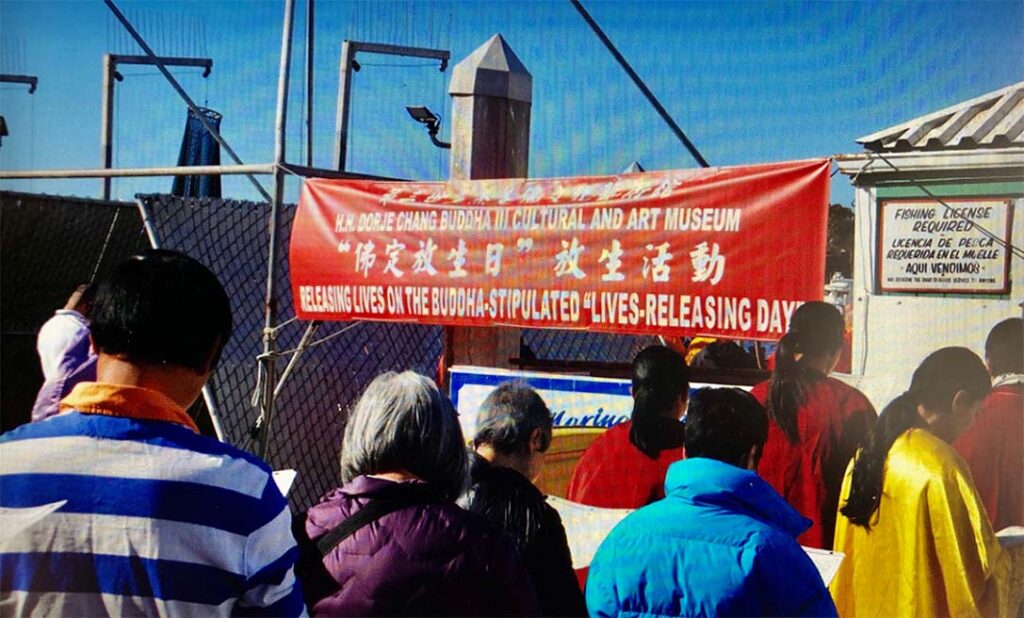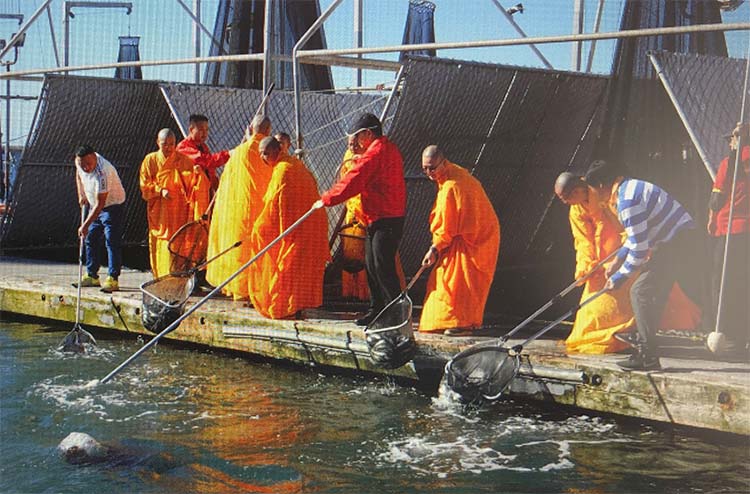
In a world reeling from the catastrophes of 2024, including unprecedented natural disasters and escalating conflicts that have deepened global suffering, Buddhists worldwide gathered on October 29 to honor the Buddha-Stipulated Day of Releasing Lives. This observance, initiated in 2009 by H.H. Dorje Chang Buddha III, symbolizes a profound commitment to compassion and liberation. Following a significant Buddhist event, H.H. Dorje Chang Buddha III designated this day as one for the compassionate release of captive lives, a practice that has since spread globally.
In 2024, the H.H. Dorje Chang Buddha III Culture and Art Museum, in partnership with the World Buddhism Association Headquarters, hosted a commemorative Dharma Assembly in Marina Del Ray, California. Esteemed holy gurus, eminent monks, and Buddhists from around the world gathered to participate in the ritual of releasing thousands of fish back into the ocean while reciting the “Heart Sutra.”

Jiaozun Zhengda, the Vice President of the World Buddhism Association Headquarters, led the event, guiding attendees through prayers and affirming the values of compassion and peace. She spoke about the day’s significance, stressing the importance of ongoing compassion beyond this observance and urging action whenever living beings face suffering or danger. The acts of compassion are not confined to specific days or places, she explained, echoing the teachings of Namo H.H. Dorje Chang Buddha III and Namo Shakyamuni Buddha. Releasing lives arises from the precept of refraining from killing and is a natural extension of this fundamental principle. Refraining from killing represents a passive virtue—ceasing harmful actions—releasing and saving lives embodies active compassion. Simply avoiding harm without engaging in positive action falls short of the true spirit of Buddha’s teachings.

However, releasing captive lives has faced scrutiny, particularly around its ecological impacts. Critics raise concerns that releasing non-native species may disrupt local ecosystems and that animals raised in captivity might struggle to adapt in the wild. One fundamental principle of releasing life, aligned with Buddha’s teachings, is that compassionate release should alleviate suffering, not inadvertently create more. This underscores the need for careful planning, adherence to local regulations, and respecting the legal and environmental frameworks in different regions worldwide. Practitioners are thus encouraged to be mindful of the intent and impact of their actions, taking a cautious approach to avoid unintended consequences that might harm the very beings they seek to liberate.

Reflecting on the event, participants described the profound experience of watching fish swim freely into the ocean, witnessing their liberation as a symbol of resilience and freedom. For many Buddhists, releasing captive lives serves as a reaffirmation of their vow to emulate the boundless compassion of Buddhas and Bodhisattvas. This practice reminds them of their commitment to cultivating compassion, encouraging them to refrain from harm, and fostering respect for all life.
The Buddha-stipulated Day of Releasing Lives shines as a beacon of hope and compassion in the face of global suffering. It provides an opportunity to extend empathy to all beings, and Buddhists worldwide continue to engage in this compassionate act with profound respect for Buddha’s precepts.
Published by: Khy Talara: US Reporter Staff, November 4, 2024





Add comment